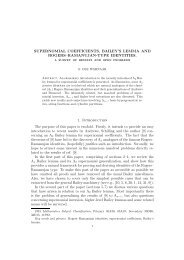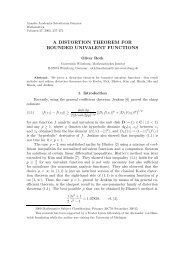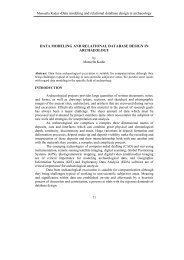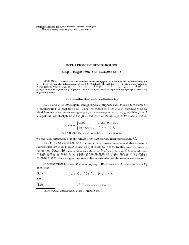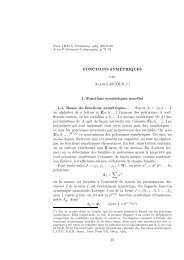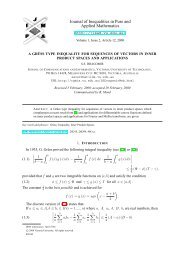CHAPTER 6 TWO-COLORED WALLPAPER PATTERNS 6.0 ...
CHAPTER 6 TWO-COLORED WALLPAPER PATTERNS 6.0 ...
CHAPTER 6 TWO-COLORED WALLPAPER PATTERNS 6.0 ...
You also want an ePaper? Increase the reach of your titles
YUMPU automatically turns print PDFs into web optimized ePapers that Google loves.
Reflections reverse colors, hidden glide reflections preserve<br />
colors (g); there exists color-reversing translation along the<br />
reflection axes (p b<br />
′ ). Such patterns are known as p b<br />
′ g .<br />
Fig. 6.17<br />
pg′ → p ′ m<br />
Once again we get color-reversing translation along the<br />
reflection axes (p′), all of which preserve colors (m): the new<br />
pattern is known as p′m .<br />
Comparing the two patterns in figures 6.15 & 6.17 we see that<br />
they are similar not only in name, but in structure as well; in fact<br />
the only thing that makes them distinct is that the p′ m has colorreversing<br />
translation while the pm doesn’t. But didn’t we promise<br />
back in 6.2.5 that “in the presence of (glide) reflection translation<br />
will play no role in the classification process”? Well, there is<br />
indeed another, more subtle way of distinguishing between pm and<br />
p′ m , and that is their hidden (‘old’) glide reflection, which of<br />
course preserves colors in the case of the pm (an ‘offspring’ of pg)<br />
but reverses colors in the case of the p′m (an ‘offspring’ of pg′ )!



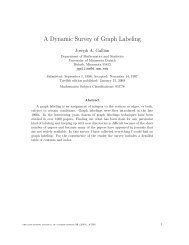


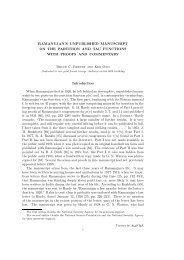
![(.,t ] and [s, .) , where [s,t ] = {s' GT; s ¤ s' ¤ t} , (.,t ] = {s' GT; s' ¤ t} and ...](https://img.yumpu.com/43303393/1/184x260/t-and-s-where-st-s-gt-s-a-s-a-t-t-s-gt-s-a-t-and-.jpg?quality=85)
